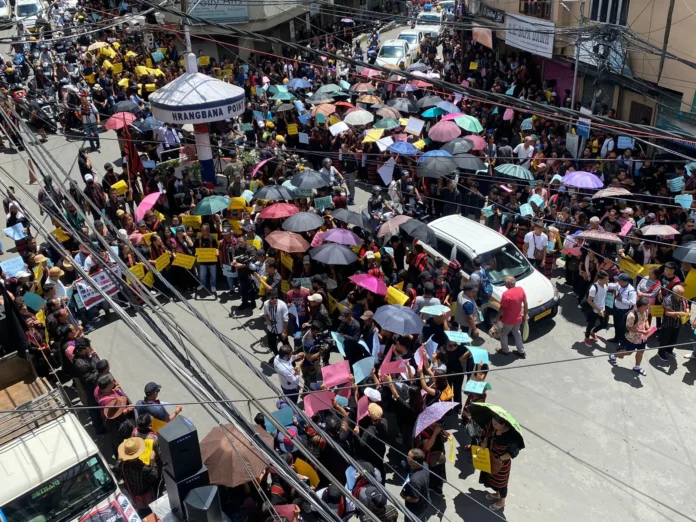Throughout history, Manipur has undergone significant transformations, shaped by the influence of various rulers and the dynamic evolution of its society. Under different administrations, the governance of hill areas within Manipur has fluctuated, leading to shifts in political and administrative control. One pivotal period in Manipur’s history was during the reign of Maharaj Pamheiba, a time marked by significant societal changes spurred by the arrival of Shantidas Gosai, a Hindu priest, in Kangleipak.
During Maharaj Pamheiba’s rule, Manipur experienced profound shifts in its societal fabric, largely influenced by the presence and teachings of Shantidas Gosai. The introduction of Hinduism by Gosai had far-reaching implications, reshaping cultural norms and religious practices in the region. This period laid the groundwork for a new identity for Manipur, one that was increasingly influenced by Hindu traditions and customs.
The integration of Hinduism into Manipuri society led to the adoption of new religious practices and beliefs, altering the cultural landscape of the region. The influence of Gosai and the spread of Hinduism played a pivotal role in shaping the collective consciousness of the Manipuri people, ushering in an era of cultural transformation and religious synthesis.
However, alongside these changes, Manipur also witnessed challenges and conflicts arising from the imposition of external influences on its indigenous culture and traditions. The introduction of Hinduism sparked debates and controversies within the community, highlighting the complexities of identity formation and cultural preservation in a rapidly changing world.
In contemporary times, the idea of Manipur continues to evolve, reflecting the ongoing processes of social, political, and cultural change. As the state navigates its way through modern challenges and aspirations, there is a growing need to redefine and reaffirm its unique identity, one that honors its rich heritage while embracing the diversity and dynamism of its people.
Moving forward, it is essential for Manipur to engage in meaningful dialogues and collective reflections on its past, present, and future. By embracing inclusivity, diversity, and respect for its cultural heritage, Manipur can chart a path towards a more cohesive and resilient society, one that celebrates its rich tapestry of traditions while embracing the winds of change.
The redefinition of the idea of Manipur is not just a historical necessity but a contemporary imperative. It is through this process of introspection and reimagining that Manipur can chart a course towards a more inclusive, vibrant, and prosperous future for all its inhabitants.



